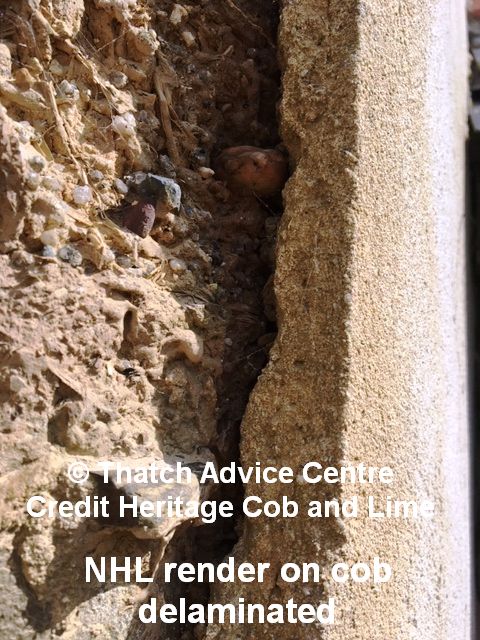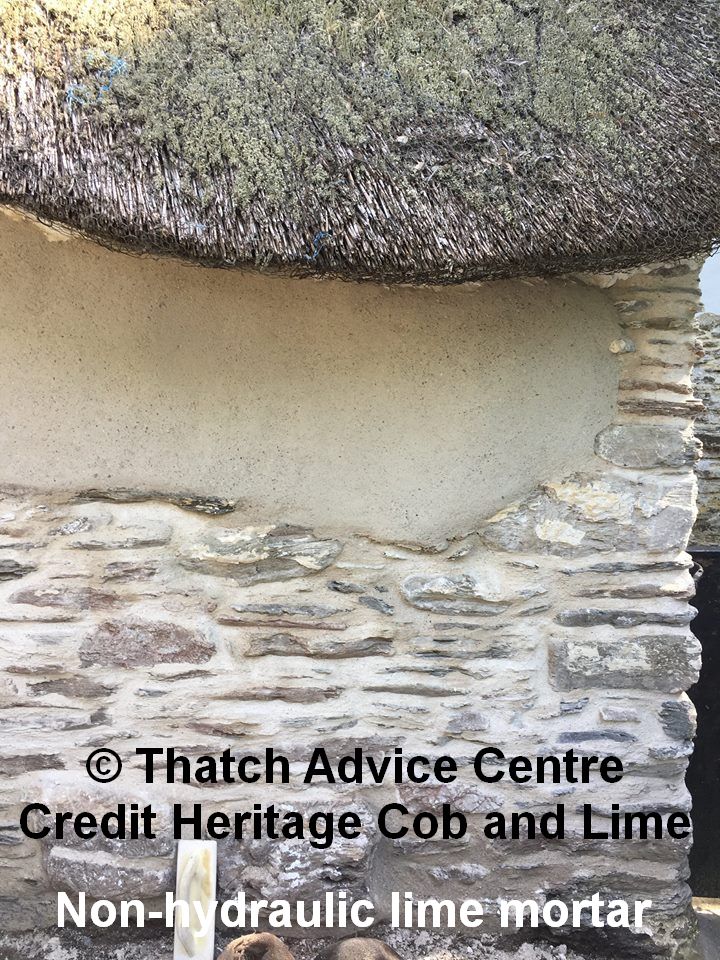Cob and Lime problems
The Thatch Advice Centre cannot know everything, indeed we are still learning. We do however have a great network of specialists whose knowledge extends to many associated areas related to thatch. Working together has the benefit of adding huge value to what we can do in advising thatched property owners on best practice. Our article today is regarding thatch, cob and lime and the importance of getting it right.
Our friends at Heritage Cob and Lime have recently alerted us to an important issue regarding the use of lime products and the serious problems caused by using the wrong one on Cob/Earth buildings.
Heritage Cob and Lime explain
“Do you know what the substrate of the building is made of and what type of render is on the exterior and interior walls? If you don’t know, it is important to understand and ask a lime mortar specialist to give their opinion.
The reason for saying this is that there are many thatched houses out there that were built using cob, usually on a stone plinth. Cob has to breathe to keep its own balanced micro climate in order to stay in good condition. The application of a lime mortar render on the outside (and a lime plaster on the inside) will ensure that this happens. However, there is a ‘But’ coming up and it’s causing an issue for some cob properties.”
Cob and Lime – bad practice
“There is currently a bad practice, which is encouraged by a few manufacturers, suppliers and builders, of using powdered Natural Hydraulic Lime (known as NHL) on Cob/Earth buildings. You will be told it’s lime and so think that everything is OK but the question you need to ask is, ‘What sort of lime?’ If it’s Non Hydraulic (fatty lime) mortar then that’s perfect, if it’s NHL then you have a potential problem.
There is a simple explanation as to why NHL (Natural Hydraulic Lime) should not be used on Cob. Pure NHL mortars & plasters end up setting as hard, if not harder than sand & cement. Historic England & Historic Scotland is now banning the use of NHL’s in the restoration of listed properties & there is a huge movement away from NHL’s as a render system. Unfortunately NHL’s are being abused & incorrectly used by many and this movement will take time to filter down through to general builders.”
Cob and Lime – good practice
“Ignorance is not an answer when there are many case studies occurring & many results already available. With any cob house, it’s essential to encourage maximum breathability & this includes having good drainage.
Non- Hydraulic mortar (fatty lime mortar, which we make here in our warehouse) has the best breathability. The porosity is good, as the aggregate we use are varied (limestone, sandstone, quartz & flint) ranging from 0-4mm, which gives the best breathable binder to the mortar & the mortar won’t shrink or crack. (All Non- Hydraulic Limes should contain a large element of limestone as this creates the capillaries giving the breathability.)
We restrict our use of NHL’s and use NHL 3.5 only as a pozzalan to help tickle along the curation period at a ratio of 6% NHL to Non Hydraulic Lime mortar. This is an effective way of helping the set without detracting from the breathability & porosity.
If in any doubt, please ask, it could save you a small fortune by ensuring you have the correct lime mortar on your property. As the old saying goes, knowledge is power!”
Cob and Lime – Make the right decision
So folks, our thanks to Heritage Cob and Lime for this clear message.
If you have thatch and cob, don’t use NHL’s.





